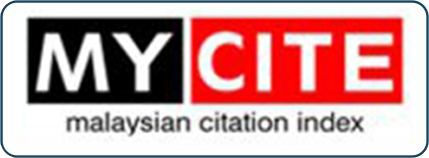Estimating Islamic banks’ technical and allocative inefficiencies: A shadow cost approach
DOI:
https://doi.org/10.33102/jmifr.v17i1.257Keywords:
Islamic banking, Shadow cost frontier, Cost efficiency, Technical inefficiency, Allocative inefficiencyAbstract
The main objective of the present paper is to empirically analyze the efficiency of 26 selected Islamic banks from different countries, namely: Bahrain, Jordan, Kuwait, Malaysia, Pakistan, Qatar, Saudi Arabia and UAE. The data used covers the period of 2012‒2016. To measure the banks’ efficiency, we used the frontier-based efficiency methodology, which was especially developed in the presence of panel data. In this respect, the panel data provided us with a fruitful framework for analyzing the efficiency. Therefore, the method employed was the shadow cost frontier based on the estimation of parametric cost inefficiency and its decomposition into both technical and allocative inefficiencies. The findings showed that the Islamic banks are costinefficient. With regard to the allocative inefficiency, it can be explained by excessive use of capital relative to labor, accompanied by an overuse of financial resources in terms of labor. The present study also revealed that the financial factor is overused, relative to the physical capital. Furthermore, technical inefficiency appears to be the second source of cost inefficiency as far as the Islamic banks are concerned. Overall, the findings indicate that the Islamic banks must improve their use of resources by about 43.7 percent for achieving efficiency.
Downloads
References
Ahmad, N. H., Noor, M. A. N. M., & Sufian, F. (2010). The efficiency of Islamic banks: Empirical evidence from the Asian countries’ Islamic banking sector. Journal of International Business and Entrepreneurship Development, 5(2), 154-166.
Ahmed, A. (2010). Global financial crisis: An Islamic finance perspective. International Journal of Islamic and Middle Eastern Finance and Management, 3(4), 306-320.
Al-Khasawneh, J. A., Bassedat, K., Aktan, B., & Thapa, P. D. P. (2012). Efficiency of Islamic banks: Case of North African Arab countries. Qualitative Research in Financial Markets, 4(2/3), 228–239.
Arslan, B. G., & Ergeç, E. H. (2010). The efficiency of participation and conventional banks in Turkey: Using data envelopment analysis. International Research Journal of Finance and Economics, 57, 156-168.
Assaf, A. G., Barros, C. P., & Matousek, R. (2011). Technical efficiency in Saudi banks. Expert System with Applications, 38(5), 5781‒5786.
Atkinson, S. E., & C. Cornwell. (1994). Parametric measurement of technical and allocative inefficiency with panel data. International Economic Review, 35(1), 231‒243. doi:10.2307/2527099.
Atkinson, S. E., & Primont, D. (2002). Stochastic estimation of firm technology, inefficiency, and productivity growth using shadow cost and distance functions, Journal of Econometrics, 108(2), 203‒225.
Atkinson, S. & Halvorsen, R. (1984). Parametric efficiency tests, economies of scale and input demand in U.S. electric power generation. International Economics Review, 25(3), 647‒662. doi:10.2307/2526224.
Bahrini, R. (2011). Efficiency analysis of Islamic banks in the Middle East and North Africa region: A bootstrap DEA approach. International Journal of Financial Studies, 5(7), 1‒13. doi:10.3390/ijfs5010007.
Bahrini, R. (2016). Technical efficiency analysis of MENA Islamic banks during and after the global financial crisis. Journal of Islamic Banking and Finance, 4(2), 15‒24. doi: 10.15640/jibf.v4n2a3
Bashir, A., & Hassan, M. (2004, December 16‒18). Determinants of Islamic banking profitability [Paper presentation]. Economic Research Forum (ERF) 10th Annual Conference, Marrakesh, Morocco.
Battese G. E., & Coelli, T. J. (1995). A Model for technical inefficiency effects in a stochastic frontier production function and panel data. Empirical Economics, 20(2), 325‒332.
Beck, T., Demirgüç-Kunt, A., & Merrouche, O. (2013). Islamic vs. conventional banking: Business model, efficiency and stability. Journal of Banking and Finance, 37(2), 433-447.
Berger, A. & Humphrey, D. (1997). The efficiency of financial institutions: International survey and directions for future research. European Journal of Operational Research, 98(2), 175‒212.
Brown, M. & Skully, K. (2003). A cross-country analysis of Islamic bank performance. Paper presented at International Banking Conference on “From money lender to banker: Evolutions of Islamic banking in relation to Judeo-Christian and oriental traditions.” Prato, Italy: Monash University Malaysia.
Chaffai, M. E. (1998). Estimation des inefficiences techniques et allocatives des banques de dépôts tunisiennes: Une frontière de coût fictive. Economie & Prevision, 136(5), 117‒129.
Chambers, R. G. (1998). Input and output indicators. In R. Färe, S. Grosskopf., & R. R. Russell (Eds), Index numbers: Essays in honour of Sten Malmquist. Kluwer Academic Publishers.
Chambers, R.G., Chung. Y., & Fa¨re R. (1998) Profit, distance functions and Nerlovian efficiency. Journal of Optimization Theory and Applications, 98(2), 351–364. doi:10.1023/A:102263750182.
Coelli, T. J., Perelman, S., & Romano, E. (1999). Accounting for environmental influences in stochastic frontier models: With application to international airlines. Journal of Productivity Analysis, 11(3), 251‒273.
Cornwell, C., P. Schmidt, & Sickles, R. C. (1990). Production frontiers with time-series variation in efficiency levels. Journal of Econometrics, 46(1-2), 185–200.
Cummins, J. D., & Weiss, M. A. (2000). Analyzing firm performance in the insurance industry using frontier efficiency methods. In G. Dionne (Ed.), Handbook of insurance economics. Kluwer Academic Publishers.
Cummins, J. D., Weiss, M. A., & Zi, H. (1999). Organizational form and efficiency: An Analysis of stock and mutual property-liability insurers. Management Science, 45(9), 1254‒1269.
Donsyah, Y. (2004). Efficiency in Islamic banking: An Empirical analysis of 18 banks. Islamic Economies Studies, 12(1), 2‒19.
Greene, W. (2003). Econometric analysis (5th ed.). Upper Saddle River.
Gishkori, M. A., & Ullah, N. (2013). Technical efficiency of Islamic and commercial banks: Evidence from Pakistan using DEA model (2007-2011). Journal of Business and Management, 7(3), 68–76.
Hamdani, H., Mohamed, N. O., & Ali, E. (2014). Technical efficiency determinants within a dual banking system: A DEA-bootstrap approach. International Journal of Applied Decision Sciences, 7(4), 382‒404.
Hassan, M. K. (2006). The x-efficiency in Islamic banks. Islamic Economic Studies, 13(2), 49–78.
Johnes, J., Izzeldin, M., & Pappas, V. (2009). The efficiency of Islamic and conventional banks in the Gulf Cooperation Council (GCC) Countries: An Analysis using financial ratios and data envelopment analysis (Working paper No. 023). Lancaster University Management School.
Kamaruddin, B. H., Safa, M. S., & Mohd, R. (2008). Assessing production efficiency of Islamic banks and conventional bank Islamic windows in Malaysia. International Journal of Business and Management Research, 1(1), 31–48.
Kumbhakar, S. C. (1997). Modeling allocative inefficiency in a translog cost function and cost share equations: An exact relationship. Journal of Econometrics, 76(1-2), 351‒356.
Kumbhakar, S., & K. Lovell. (2000). Stochastic frontier analysis. Cambridge University Press.
Lau, L. J., & Yotopoulos, P. A. (1971). A test of relative efficiency and application to Indian agriculture. The American Economic Review, 61(1), 94‒109.
Majeed, M., & Zanib, A. (2016). Efficiency analysis of Islamic banks in Pakistan. Humanomics, 32(1), 19-32.
Mohamad Noor, M. A. N., & Ahmad, N. H. (2012). The determinants of Islamic banks’ efficiency changes: Empirical evidence from the world banking sectors. Global Business Review, 13(2), 179–200. doi:10.1177/097215091201300201.
Moualhi, M. (2015). Efficiency in Islamic banking: Evidence from MENA region. International Journal of Islamic Economics and Finance Studies, 1(2), 5‒25.
Qureshi, A., & Shaikh, M. (2012). Efficiency of Islamic and conventional banks in Pakistan: A nonparametric approach. International Journal of Business and Management, 7(7), 40‒50.
Racha G. (2011). Gouvernance et performance globale de banques Islamiques. International Book Market Service Limited.
Rahman, A. R. A., & Rosman, R. (2013). Efficiency of Islamic banks: A comparative analysis of MENA and Asian countries. Journal of Economic Cooperation and Development, 34(1), 63‒92.
Sadiq, R., Arshed, N., & Ahmad, H. K. (2017). Determinants of cost efficiency of Islamic Banks of Pakistan. The Journal of Muamalat and Islamic Finance Research, 14(2), 111‒128.
Samad, A. (2004). Performance of interest-free Islamic banks vis-à-vis interest-based conventional banks of Bahrain. IIUM International Journal of Economics, Management and Accounting, 12(2), 1-15.
Samad, A. (2019). Determinants of efficiency of the Islamic banks of Bangladesh during 2008-2012. Journal of Islamic Banking and Finance, 7(1), 1‒13.
Samad, A., & Chowdhury, M. A. (2019). Comparative bootstrap DEA technical efficiencies and determinant factors: Evidence from the Islamic banks of Bahrain and United Arab Emirates. Research in World Economy, 10(3), 291‒298. doi:10.5430/rwe.v10n3p291.
Srairi, S. A. (2010). Cost and profit efficiency of conventional and Islamic banks in GCC countries. Journal of Productivity Analysis, 34(1), 45–62. doi:10.1007/s11123-009-0161-7.
Srairi, S. A. (2013). Ownership structure and risk-taking behaviour in conventional and Islamic banks: Evidence for MENA countries. Borsa Istanbul Review, 13(4), 115‒127.
Varian, H. R. (1984). The non-parametric approach to production analysis. Econometrica, 52, 579‒598.
Wahid, M. A. (2016). Comparing the efficiency of Islamic and conventional banks based on the evidence from Malaysia. The Journal of Muamalat and Islamic Finance Research, 13(1), 35‒66.
Downloads
Published
How to Cite
Issue
Section
License
Copyright (c) 2020 Mohamed Nejib Ouertani, Hanen Hamdani, Mohamed Sharif Bashir

This work is licensed under a Creative Commons Attribution 4.0 International License.















